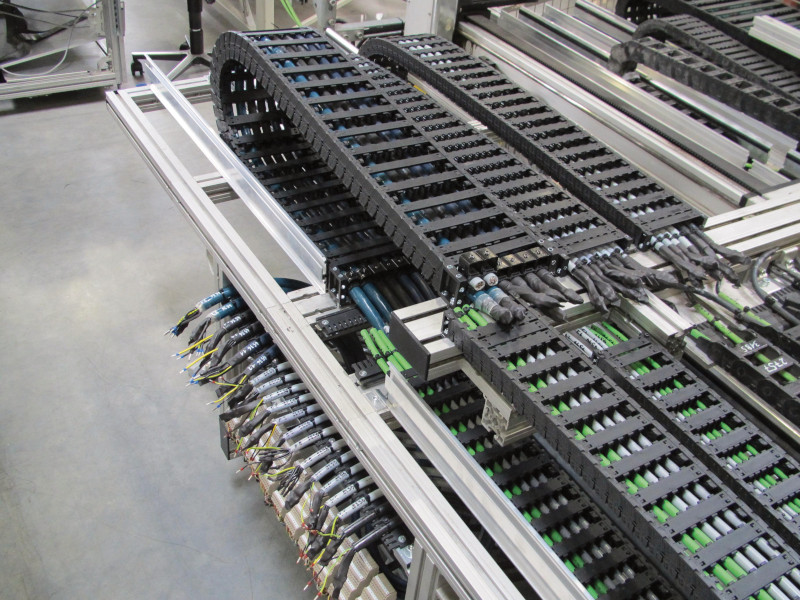We are not on THE line but on THE line!
Volker Beissel | 15. February 2021

I am asked time and again what igus has to do with cables? After first cringing at my self-conception, I relax and am happy to be able to answer this question. I’ll start at the beginning: my heart beats for electrical engineering and before I came to igus, I knew cable only as a connector between my power source and the consumer. Cable is a necessary evil in order to transport energy or data from A to B. During training and studies, you learn about different structures and design criteria. However, these always refer to the electrical benefit. For example, every electrician knows that 1.5mm² in the household is protected with 16A. Likewise, everyone knows that data cables are best constructed as twisted pairs.
Cables in machine tools

The electrical parameters of a cable are strictly standardised (cross section, material resistance, characteristic wave impedance, capacitance, etc.). However, the mechanical parameters are much broader. With machine tools in particular, however, you get to the point where the mechanical framework conditions are known down to the µ. Right there, the energy supply should be in no way inferior to these exact specifications. Because machine tools are the heart of industrial production. If there is an unexpected breakdown, then production stops. If it is also due to a defective cable, that is the worst case. A defective lead screw is quickly located and replaced. A defective cable initially causes a sporadic error message. This error message can usually have various causes, all of which must be gone through. When the cable is finally located as the source of the fault, the next problem arises, because unlike the lead screw, which is only located in one place, the cable is laid inaccessibly through the entire machine. This makes the exchange an extremely extensive undertaking. All the more annoying when it turns out in retrospect that this shutdown would not have occurred with a different cable.
chainflex starts where others stop

It is precisely to avoid these unexpected failures that we have developed our chainflex cables. The special focus here is on the continuous mechanical load. From the very beginning, we carry out extensive tests with every cable. The special thing about this is that these tests not only refer to standard tests, but also to tests in the energy chain. Our cables therefore contain, in addition to the standard specifications “fixed” and “flexible”, the specification “e-chain linear” or, in the case of our ROBOT cables, “e-chain twisted”. This data was all determined in our test laboratory spread across more than 3,800m². Based on this, the exact service life of the cable in the machine can be calculated with our online tool. This prevents unwanted machine downtime, which could have been avoided by selecting the right cable.
Other interesting links:
Which jacket material for which industry?
No more fairy tales … “I am only allowed to use original drive cables from the drive manufacturer!”
